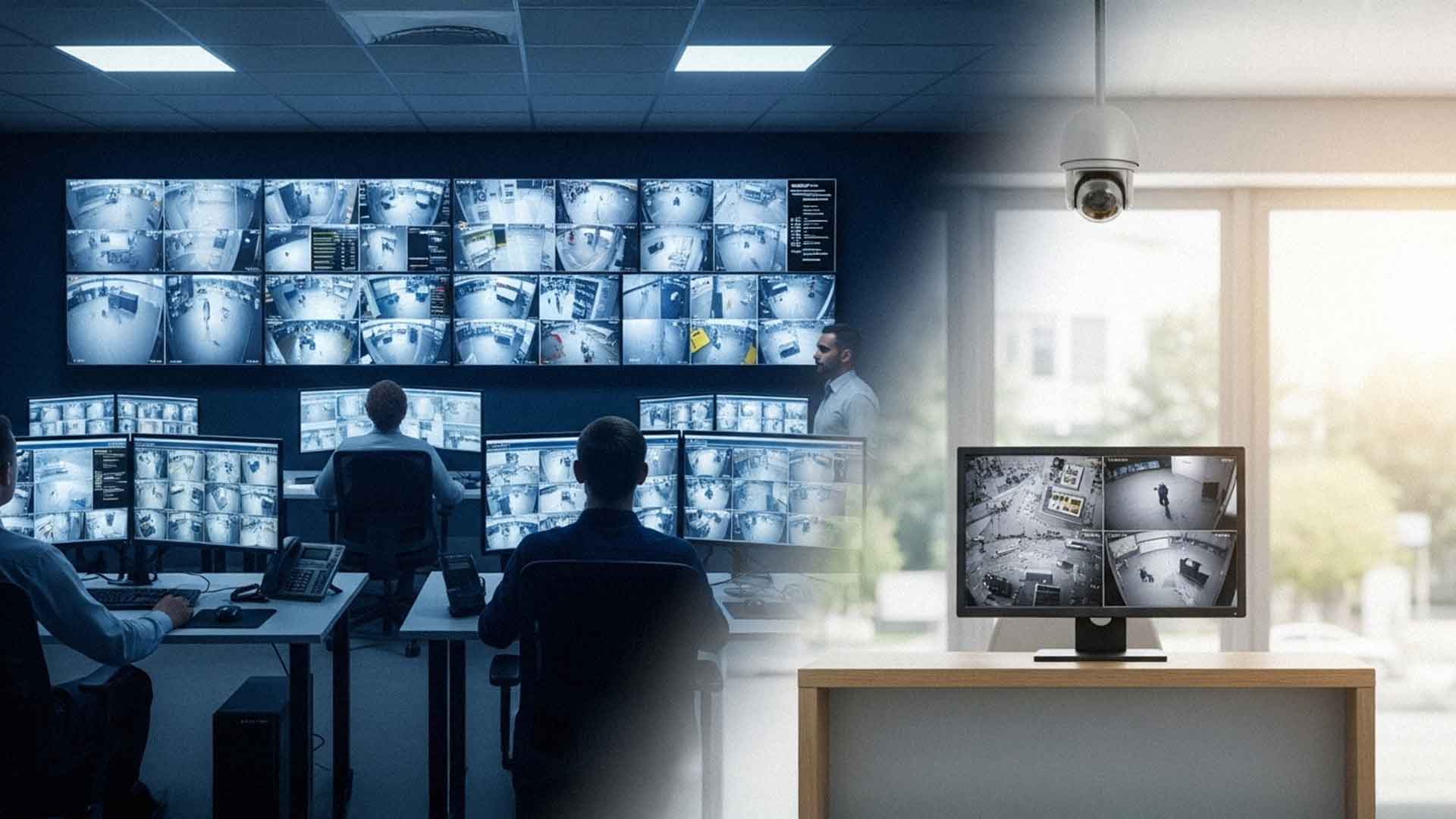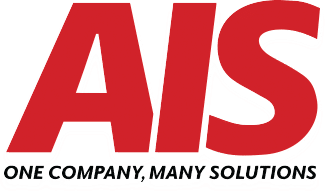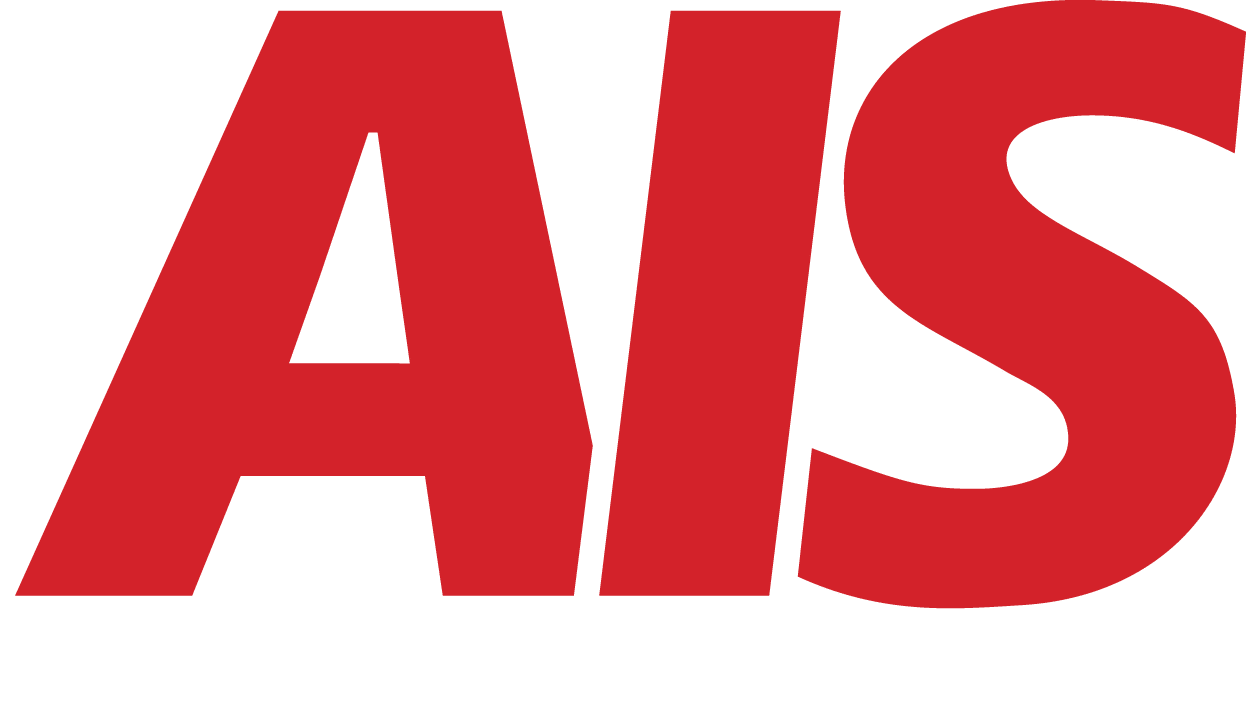Office Security System: What Defines “Enterprise‑Grade” vs SMB Surveillance Equipment
August 12th, 2025 | 5 min. read

Suppose you are in the market for an office security system.
In that case, you have probably seen the terms “enterprise-grade” and “SMB” (small and medium business) used to describe different types of surveillance equipment.
On the surface, both categories can look surprisingly similar. They may even have identical camera designs, apps, and storage options.
So why do enterprise systems often cost more, and what exactly makes them different from SMB equipment?
In this guide, we will walk you through the fundamental differences, the features you can expect from each, and how to decide which is right for your business.
Why the Distinction Matters
The Risk of Choosing the Wrong System
Buy an SMB-level camera system for a large corporate environment. You might quickly run into limits on how many cameras you can add, how long footage is stored, or how the system integrates with your access control.
On the other hand, investing in enterprise-grade gear for a small office could mean paying for features you will never use.
How Business Size and Needs Affect Your Security Choice
The correct surveillance setup is not just about the size of your building. It also depends on your industry, compliance requirements, and security goals.
For example, a healthcare provider must follow HIPAA guidelines for data storage, while a retail store might focus more on loss prevention and customer safety.
What “Enterprise-Grade” Surveillance Means
Core Features You Will Typically See
Enterprise-grade systems are designed for large, complex environments. You can expect:
- Support for hundreds or even thousands of cameras
- Centralized management software that works across multiple sites
- High-resolution cameras with advanced low-light performance
- Flexible storage, including hybrid cloud and on-site options
- Redundant systems for uptime protection
Scalability and Integration Capabilities
An enterprise system grows with your organization. You can add cameras, servers, and analytics tools without replacing the core platform. Many integrate with building access control, alarm systems, and even AI-based analytics to detect unusual behavior.
Compliance and Security Standards
Industries such as finance, healthcare, and government often require specific certifications and encryption levels for video storage and transmission. Enterprise-grade platforms are built with these compliance standards in mind, making audits and inspections easier.
What Defines SMB Surveillance Equipment
Core Features for Small and Medium Businesses
SMB systems are designed for simpler deployments, usually within one or two locations. Common features include:
- Support for a smaller number of cameras
- Easy-to-use mobile apps and web dashboards
- Cloud-based storage or local network video recorders (NVRs)
- Basic motion detection and alerts
Common Limitations Compared to Enterprise Systems
While many SMB systems now offer HD or even 4K cameras, they may not have advanced video analytics, multi-site management, or redundant failover systems.
Storage retention might also be limited to 7–30 days unless you pay for additional capacity.
When SMB Equipment Is the Smarter Choice
If you operate a single office, retail store, or warehouse with minimal compliance requirements, SMB solutions are often more cost-effective and easier to manage.
They also tend to have simpler installation processes and lower ongoing costs.
Side-by-Side Comparison of Enterprise vs SMB Systems
|
Feature |
Enterprise-Grade |
SMB |
|
Camera Resolution |
HD to 4K with enhanced low-light and WDR |
HD to 4K, basic night vision |
|
Max Camera Count |
Hundreds to thousands |
Dozens |
|
Storage |
On-site, cloud, or hybrid with long retention |
Local NVR or cloud, limited retention |
|
Management Tools |
Centralized multi-site control, role-based permissions |
Basic remote access, single-site focus |
|
Analytics |
AI-based detection, license plate recognition, and heat mapping |
Basic motion detection |
|
Support |
Dedicated technical teams, SLAs, and extended warranties |
Standard warranty, online support |
Pricing and Cost Factors
Upfront Equipment and Installation Costs
Enterprise-grade systems often require servers, dedicated storage devices, and network upgrades.
These costs are in addition to higher-priced cameras with advanced features. SMB systems usually need only cameras and an NVR, making the upfront investment smaller.
Ongoing Maintenance and Licensing Fees
Enterprise platforms typically have annual licensing fees for management software, analytics, and integrations.
SMB systems may have optional subscriptions for extended cloud storage or advanced features, but they are generally less expensive to maintain.
Total Cost of Ownership Over Time
While SMB systems are cheaper upfront, enterprise systems can be more cost-effective for large organizations over the long term.
They reduce the need for frequent upgrades and make it easier to scale without replacing core infrastructure.
How to Decide Which Is Right for You
Assessing Your Security Risks
Start by identifying what you need to protect. A business dealing with sensitive customer information or high-value inventory has different risks compared to a small creative studio. Your risk profile should guide the level of sophistication you require.
Considering Future Growth and Expansion Plans
If you expect to open more locations, enterprise-grade systems can save you from having to replace your surveillance infrastructure later. If your business footprint remains the same, an SMB system could serve you well for years.
Balancing Features with Budget
There is no need to overbuy. Instead, list the must-have features for your security operations. Then see which category meets those needs without adding unnecessary complexity or cost.
Questions to Ask a Security Provider Before You Buy
About Performance and Reliability
- What is the uptime guarantee?
- How do you handle redundancy in case of system failure?
About Integration with Existing Systems
- Can the system integrate with my access control or alarm system?
- Does it support third-party cameras or only proprietary ones?
About Long-Term Support and Warranty
- What is included in the warranty?
- Is there a guaranteed response time for support requests?
- Are software updates included, and for how long?
Where Do You Fall? Final Recommendations and Next Steps
Choosing between enterprise-grade and SMB surveillance equipment comes down to your business’s size, security requirements, and growth plans.
Large, multi-location companies with strict compliance needs will benefit from the scalability, integration, and reliability of enterprise-grade systems.
Smaller businesses with limited budgets and simpler security needs will find SMB systems more than sufficient.
At AIS, we help businesses in Las Vegas and Southern California choose the right surveillance solution for their unique needs. To learn more, reach out to us today!
A true southerner from Atlanta, Georgia, Marissa has always had a strong passion for writing and storytelling. She moved out west in 2018 where she became an expert on all things business technology-related as the Content Producer at AIS. Coupled with her knowledge of SEO best practices, she's been integral in catapulting AIS to the digital forefront of the industry. In her free time, she enjoys sipping wine and hanging out with her rescue-dog, WIllow. Basically, she loves wine and dogs, but not whiny dogs.
Topics:



